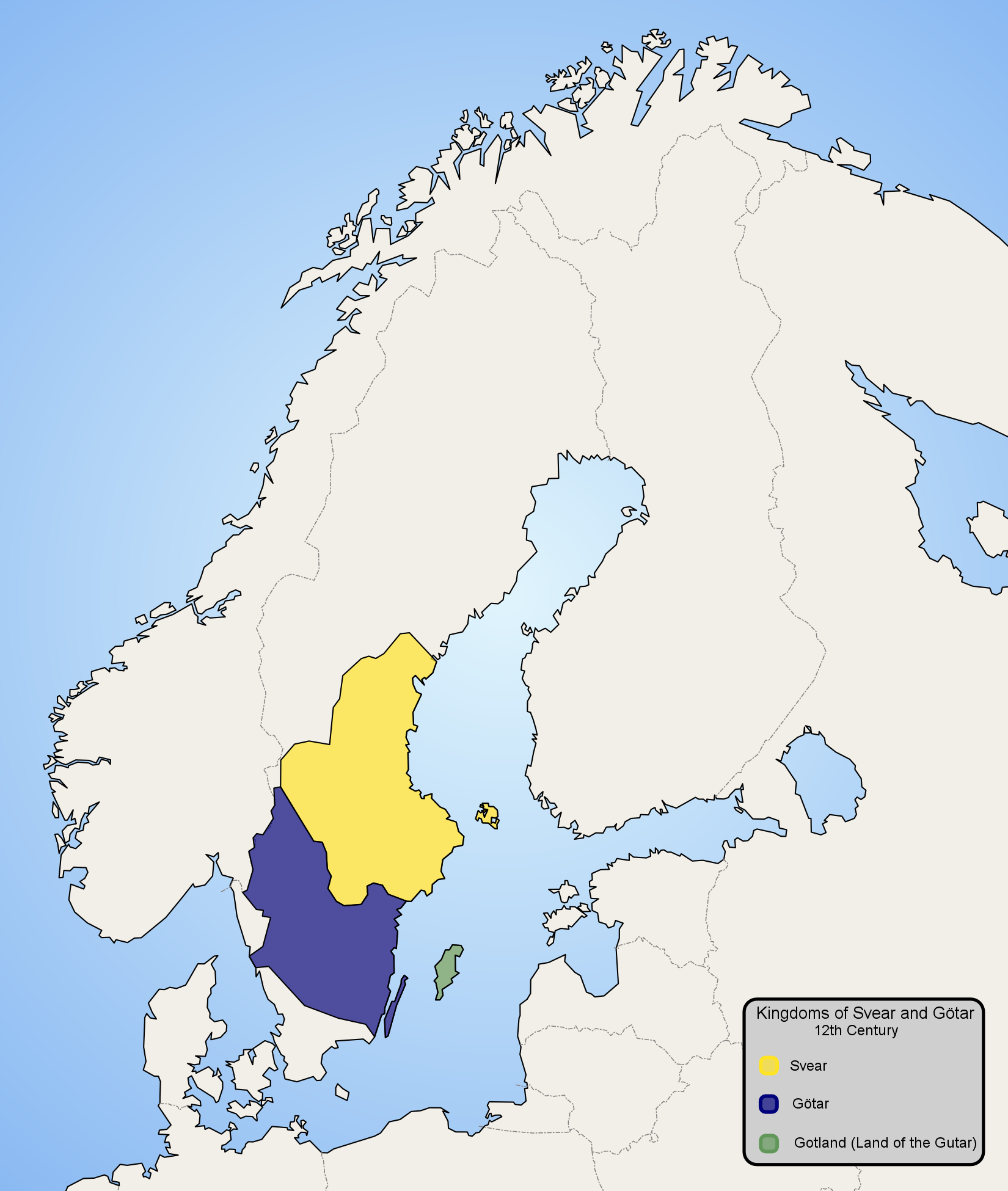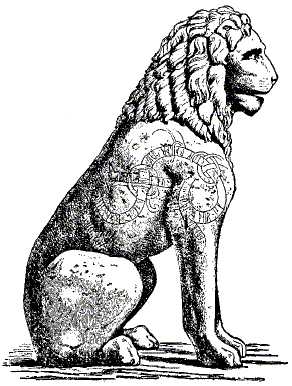|
Awair Strabain
Awair Strabain or ''Avar Stråben'' ("straw-legs") was according to the Gutasaga a chieftain from Alva socken on Gotland and a wise and able man. The Gutasaga relates how many kinds attacked the island of Gotland in heathen times, but the gutes had always emerged victorious. Apparently the gutes were in conflict with the Swedes since several emissaries were sent to them to negotiate peace, but with no success. Finally Awair was sent as negotiator to the king of the Swedes. He reached an agreement that stipulated that Gotland would pay a certain tax to the land of the Swedes; "so that the Gutes would go of their own free will under the king of the Swedes so that they would freely and without risk travel to all places in the lands of the Swedes without paying tolls or other fees." According to a legend Awair Strabain came to the king of the Swedes and was granted an audience during a meal. The king asked "what news on the island of the Gutes?" to which Awair answered "Not much. ... [...More Info...] [...Related Items...] OR: [Wikipedia] [Google] [Baidu] |
Gutasaga
Gutasaga (''Gutasagan'') is a saga regarding the history of Gotland before its Christianization. It was recorded in the 13th century and survives in only a single manuscript, the Codex Holm. B 64, dating to , kept at the National Library of Sweden in Stockholm together with the Gutalag, the legal code of Gotland. It was written in the Old Gutnish language, a variety of Old Norse. A local creation myth The saga begins with Gotland being discovered by a man named Þieluar (Tjalve) (Gutnish: ''Tjelvar''). He was a mythical figure who shows up twice in the Prose ''Edda'' and once in ''Gutasaga''. Gotland is under a spell and under water during the day and out of water only during the night, a spell that is broken by Þieluar lighting a fire on the island. Þieluar's son Hafþi (Havde) and his wife Vitastjerna (Gutnish: Hwitastierna; English: White Star) had three sons named Graip, Gute and Gunfjaun, the ancestors of the Gutes. After Havde's and Vitastjerna's first night together, ... [...More Info...] [...Related Items...] OR: [Wikipedia] [Google] [Baidu] |
Alva, Gotland
Alva is a populated area, a socken (not to be confused with parish), on the Swedish island of Gotland. It comprises the same area as the administrative Alva District, established on 1January 2016. Geography Alva is the name of the socken as well as the district. It is also the name of the small village surrounding the medieval Alva Church, sometimes referred to as ''Alva kyrkby''. It is situated in the south part of Gotland. , Alva Church belongs to Alva-Hemse-Rone parish in Sudrets pastorat, along with the churches in Hemse and Rone Rone is the pseudonym of Tyrone Wright (born 1980), an internationally renowned street artist based in Melbourne, Australia. History Rone grew up in the city of Geelong, Victoria, before moving to Melbourne in 2001. In 2002, he started dec .... References External links *Objects from Alva at the Digital Museumby Nordic Museum Populated places in Gotland County {{Gotland-geo-stub ... [...More Info...] [...Related Items...] OR: [Wikipedia] [Google] [Baidu] |
Gotland
Gotland (, ; ''Gutland'' in Gutnish), also historically spelled Gottland or Gothland (), is Sweden's largest island. It is also a province, county, municipality, and diocese. The province includes the islands of Fårö and Gotska Sandön to the north, as well as the Karlsö Islands (Lilla and Stora) to the west. The population is 61,001, of which about 23,600 live in Visby, the main town. Outside Visby, there are minor settlements and a mainly rural population. The island of Gotland and the other areas of the province of Gotland make up less than one percent of Sweden's total land area. The county formed by the archipelago is the second smallest by area and is the least populated in Sweden. In spite of the small size due to its narrow width, the driving distance between the furthermost points of the populated islands is about . Gotland is a fully integrated part of Sweden with no particular autonomy, unlike several other offshore island groups in Europe. Historically there w ... [...More Info...] [...Related Items...] OR: [Wikipedia] [Google] [Baidu] |
Gutes
The Gutes (old west norse ''Gotar'', old gutnish ''Gutar'') were a North Germanic tribe inhabiting the island of Gotland. The ethnonym is related to that of the ''Goths'' (''Gutans''), and both names were originally Proto-Germanic *''Gutaniz''. Their language is called Gutnish (''gutniska''). They are one of the progenitor groups of modern Swedes, along with historical Swedes and Geats. Name The name of the Gutes in Old West Norse is ''Gotar (adj. gotneskr)'', which is the same as that used for the Goths. Old Norse sources such as the sagas do not distinguish between the Goths and the Gutes. In accordance, the Old East Norse term for both Goths and Gutes seems to have been ''Gutar'' (adj. ''gutniskr''). Only the Goths and Gutes bear this name among all the Germanic tribes, even if ''Geat'' is closely related. The fact that the ethnonym is identical to ''Goth'' may be the reason why they are not mentioned as a special group until Jordanes' Getica, where they may be those who ... [...More Info...] [...Related Items...] OR: [Wikipedia] [Google] [Baidu] |
Swedes (tribe)
The Swedes ( sv, svear; Old Norse: ''svíar'') (probably from the PIE reflexive pronominal root * s(w)e, "one's own ribesmen/kinsmen;Bandle, Oskar. 2002. The Nordic languages: an international handbook of the history of the North Germanic languages. 2002. P.391 ang, Swēon) were a North Germanic tribe who inhabited Svealand ("land of the Swedes") in central Sweden and one of the progenitor groups of modern Swedes, along with Geats and Gutes. They had their tribal centre in Gamla Uppsala. The first author who wrote about the tribe is Tacitus, who in his ''Germania'' from 98 AD mentions the ''Suiones''. They are possibly first mentioned locally by the Kylver Stone in the 4th century. Jordanes, in the 6th century, mentions ''Suehans'' and ''Suetidi''. ''Beowulf'' mentions the Swedes around 1000 A.D. According to early sources such as the sagas, especially '' Heimskringla'', the Swedes were a powerful tribe whose kings claimed descendence from the god Freyr. During the Vi ... [...More Info...] [...Related Items...] OR: [Wikipedia] [Google] [Baidu] |
Consolidation Of Sweden
The consolidation of Sweden involved an extensive process during which the loosely organized social system consolidated under the power of the king. The actual age of the Swedish kingdom is unknown.Hadenius, S; Nilsson, T and Åselius, G. (1996:13): Also, for various reasons, scholars differ in defining early Sweden as either a country, state or kingdom. Unlike the histories of Denmark and Norway, there is no agreement on a reliable date for a unified Sweden. Historians judge differently the sources for the history of Sweden's consolidation. The earliest history blends with Norse mythology. Early primary sources are foreign; secondary sources were written at a later date. Older sources Based on the origins of the name of the kingdom as meaning (Kingdom of the Swedes), some historians have argued that Sweden was unified when the Swedes first solidified their control over the regions they were living in. The earliest date for this is based on a brief section in the Roman his ... [...More Info...] [...Related Items...] OR: [Wikipedia] [Google] [Baidu] |
Wulfstan Of Hedeby
Wulfstan of Hedeby was a late ninth century traveller and trader. His travel accounts, as well as those of another trader, Ohthere of Hålogaland, were included in the '' Old English Orosius''. It is unclear if Wulfstan was English or indeed if he was from Hedeby, in today's northern Germany near the city of Schleswig. According to this account, Wulfstan undertook a journey by sea from Hedeby to the Prussian trading centre of Truso around the year 880. He names the lands the coasts he passes. This may be the earliest recorded use of the word "Denmark" (''Danemearcan''). The text of Wulfstan is also one of the earliest attestments of unique traditions and customs of Western Balts - Prussians, called ''Estum'', and their land called Witland in his text. The purpose of this travel remains unclear; one hypothesis is that King Alfred was interested in having allies against viking Vikings ; non, víkingr is the modern name given to seafaring people originally from ... [...More Info...] [...Related Items...] OR: [Wikipedia] [Google] [Baidu] |
Beowulf
''Beowulf'' (; ang, Bēowulf ) is an Old English Epic poetry, epic poem in the tradition of Germanic heroic legend consisting of 3,182 Alliterative verse, alliterative lines. It is one of the most important and List of translations of Beowulf, most often translated works of Old English literature. The date of composition is a matter of contention among scholars; the only certain dating is for the manuscript, which was produced between 975 and 1025. Scholars call the anonymous author the "''Beowulf'' poet". The story is set in pagan Scandinavia in the 6th century. Beowulf (hero), Beowulf, a hero of the Geats, comes to the aid of Hrothgar, the king of the Danes (Germanic tribe), Danes, whose mead hall in Heorot has been under attack by the monster Grendel. After Beowulf slays him, Grendel's mother attacks the hall and is then defeated. Victorious, Beowulf goes home to Geatland and becomes king of the Geats. Fifty years later, Beowulf defeats a The Dragon (Beowulf), dragon, b ... [...More Info...] [...Related Items...] OR: [Wikipedia] [Google] [Baidu] |


